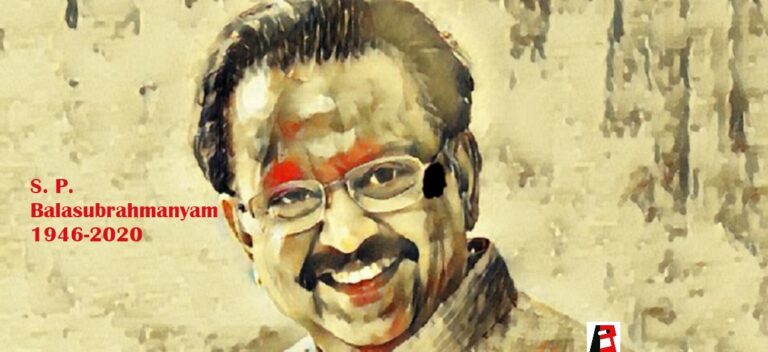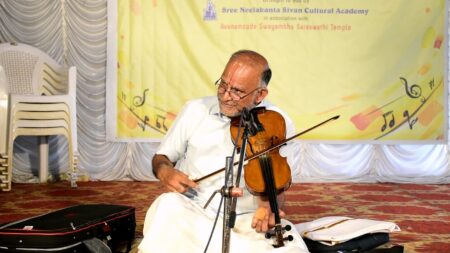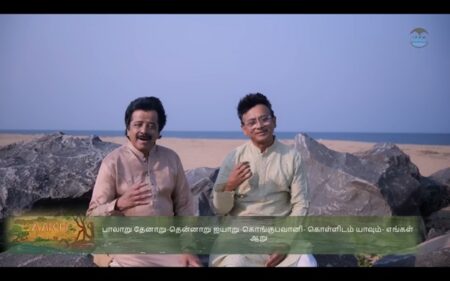SP Balasubrahmanyam (1946-2020) was much more than a singing legend and his demise leaves a massive vacuum that may never be replaced.
Quite a few equally interesting points have always got smothered under the big note of wonder that Mannil Indha Kadhalandhri is a “breathless” number. Those two passages, which come as same-tune stanzas, have S P Balasubramanyam acting while singing in a playful battle with one’s own lungs. Back in the studio, the vocalist lends tired gasps at the end of both the long-drawn charanams. Clearly, they add to the on-screen effect of the hero in the Tamil movie Keladi Kanmani.
All that a good three decades ago.
The man in the reel and real is gone. SPB died today (September 25, Friday), punctuating India’s film music history with ellipses whose length may remain undefined forever. Having rendered over 40,000 songs in 16 languages that earned him an array of industry awards besides coveted civilian honours such as the Padma Bhushan, the legend was 74 years old. The end came following a multiple organ failure at a Chennai hospital that was treating him for seven weeks for Covid-19.
A “breathless” experience
To say SPB “breathed his last” resounds with a cruel irony vis-à-vis the 1990 ditty which had yet again made him particularly famous. For all the romantic frolic Mannil Indha portrays through the middle-aged hero and his equally chubby lover, SPB was meeting a multi-faceted challenge. It will be simplistic to term “breathless” the whole viewing/listening experience.
None would dispute the somewhat superhuman task required to croon those 12 lines in 41 seconds as set by music director Ilayaraja. Yet, the four-minute number was much more than about those set of verses which necessitated the puffs and pants.
The rasps were so captivating to see and hear that we perhaps missed the acting excellence of SPB. To emote shyness isn’t easy for a protagonist in a movie when the state is Tamil Nadu, where cine-goers seldom miss a chance to celebrate maleness brimming with chauvinism. SPB has himself sung for several such celluloid heroes.
In Keladi Kanmani, he goes for a sensitive portrayal of the central character. The film was the directorial debut of Vasanth, who was all of 26 years then. Still younger, in 1987, Vasanth, assisting filmmaker K Balachander, had seen SPB act in Mannathil Uruthi Veendum along with star actress Suhasini. The singer’s “realistic” style in front of the camera impressed Vasanth.
That element of his acting comes amply clear in Mannil Indha. Often the combo with Radhika can give the spectator the impression that SPB is the seasoned actor in the pair. His nods are stylish, not to speak of their timing with certain keywords in the lyrics (Pavalar Varadarajan). The smiles are a hearty mix of candidness and mischief. The casual combing of the hairs with the palm highlights the windy air around, the cautious walk between the boulders accentuates his physique that projects an unlikely boyfriend.
Maybe the lip sync isn’t all too relevant here, given it’s the singer acting. (SPB appeared in 45 movies overall.) Curiously, though, he often gained the reputation of performing something of the contrary. A renowned dubbing artist, SPB’s accent changed suitably with languages, the modulation would be in tune with the regional ethos. What’s more, his own voice would alter subtly to suit that of the actor in the flick.
Thus, when SPB sang in Maine Pyar Kiya (1989), you felt it was possibly a disgusted Salman Khan himself delivering the lines beginning with Dil Deewana. On the other hand, at the start of that decade, SPB stunned his own fans as much as the world of Carnatic music with his grip over microtones that are essential to south Indian classical. Sankarabharanam (1980) wouldn’t have been that big a Telugu hit (to be dubbed into Malayalam and Tamil) if someone else did the vocals. SPB’s renditions of weighty kritis made them sound like an extension of the dialogues by the ageing patriarch named Sankara Sastri (JV Somayajulu).
Harikatha legacy
Often, SPB, born in Madras Presidency’s Konetampet village into a Telugu family with a legacy in invocatory Harikatha music-drama, won praise for singing such classical compositions despite having not learned Carnatic formally. This, however, is a fallacious observation. For, the man never went on to perform concerts. It was just that he had immense talent, which included the gift of generating kambita gamaka and bhriga that are characteristic of the Carnatic idiom.
In that blockbuster directed by K Viswanathan, SPB comes up with a long-drawn note that opens the song beginning with the word Sankara. He holds it straight, devoid of any sways. That’s, incidentally, contrary to a song starting with Gange (2006) by a fellow titan. KJ Yesudas, who SPB invariably held in high esteem, resorts to vibrato (besides piecing together?) in that stretch of 17 seconds.
Again, unlike Yesudas, SPB never imposed himself with food restrictions whatsoever. In a trait similar to that of Carnatic vidushi M L Vasanthakumari (1928-90), SPB enjoyed his ice-creams, sometimes just ahead of singing. All his 54 years of career. And on one day, he recorded as many as 21 numbers!
Like Radhika’s character chipping in with short sentences in Mannil Indha, SPB uttered Tamil words to the comedy of Kamal Hassan’s utterings in Tere Mere Beech Mein sung by Lata Mangeshkar. Mind you, SPB’s collaboration with Bollywood’s Ek Duuje Ke Liye (1981) was a year after the thoroughly Dravidian Sankarabharanam. The raga Shivaranjani it employed would have come out with all the lavish Hindustani flair if the singer was SPB, too. That’s evident from his subsequent renditions of the song on several daises. Often informally, and typically impulsively.
If SPB’s conduct was genuinely pleasing, the person was the happy-go-lucky kind. Little surprise, the big and small in Indian cinema—across languages and departments—are finding it hard to maintain their composure while recalling their association with SPB. And those more devastated with the demise are the common people. As an influential icon, SPB stands on par with late musicians Mohammed Rafi upcountry and Bhupen Hazarika of the eastern hills. And, eclectically, a cut above them.





1 Comment
We respect SPB from the core of our heart. But what do you mean by “eclectically, a cut above them”? You cannot compare.